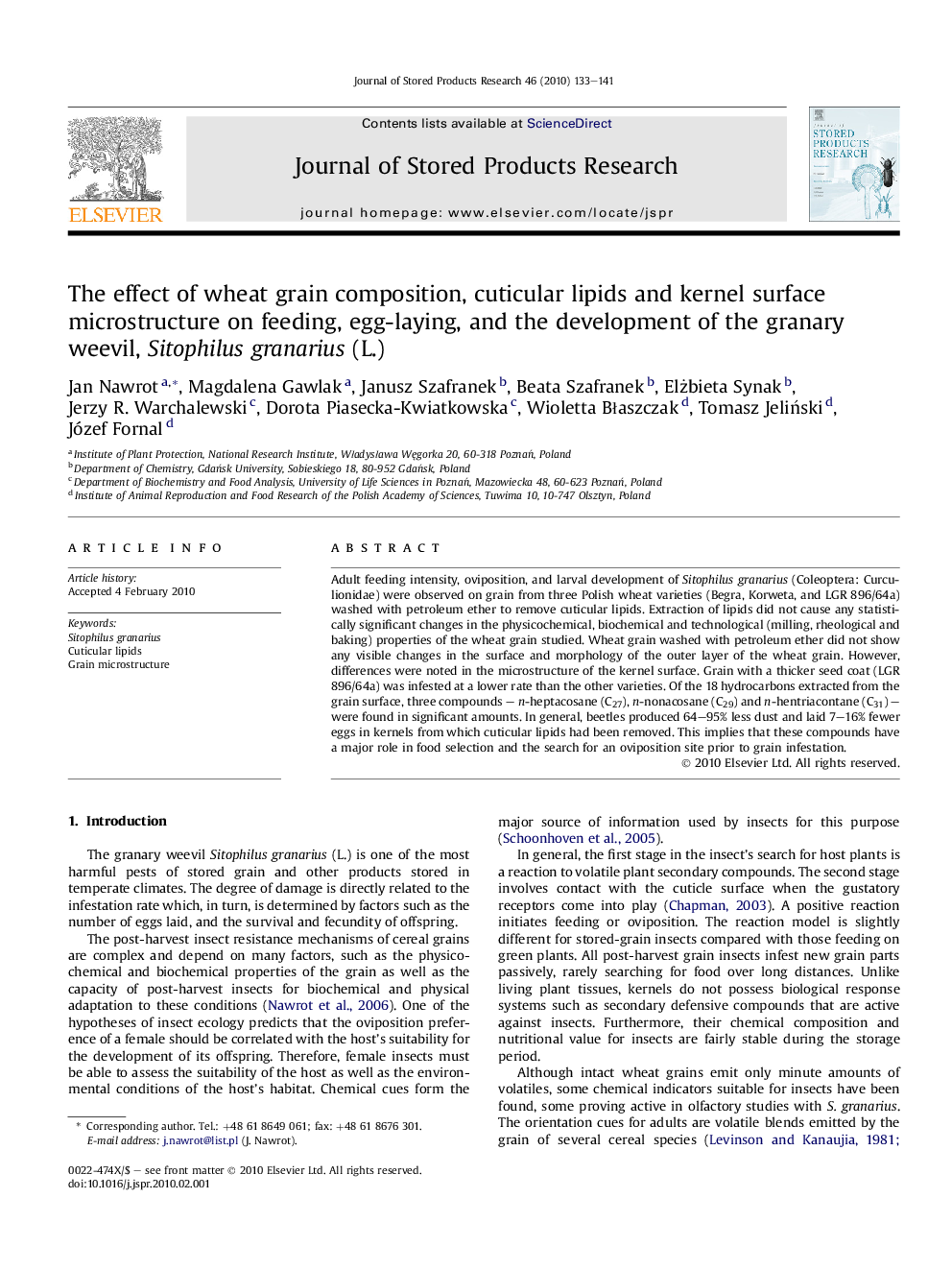| کد مقاله | کد نشریه | سال انتشار | مقاله انگلیسی | نسخه تمام متن |
|---|---|---|---|---|
| 4517319 | 1322536 | 2010 | 9 صفحه PDF | دانلود رایگان |

Adult feeding intensity, oviposition, and larval development of Sitophilus granarius (Coleoptera: Curculionidae) were observed on grain from three Polish wheat varieties (Begra, Korweta, and LGR 896/64a) washed with petroleum ether to remove cuticular lipids. Extraction of lipids did not cause any statistically significant changes in the physicochemical, biochemical and technological (milling, rheological and baking) properties of the wheat grain studied. Wheat grain washed with petroleum ether did not show any visible changes in the surface and morphology of the outer layer of the wheat grain. However, differences were noted in the microstructure of the kernel surface. Grain with a thicker seed coat (LGR 896/64a) was infested at a lower rate than the other varieties. Of the 18 hydrocarbons extracted from the grain surface, three compounds – n-heptacosane (C27), n-nonacosane (C29) and n-hentriacontane (C31) – were found in significant amounts. In general, beetles produced 64–95% less dust and laid 7–16% fewer eggs in kernels from which cuticular lipids had been removed. This implies that these compounds have a major role in food selection and the search for an oviposition site prior to grain infestation.
Journal: Journal of Stored Products Research - Volume 46, Issue 2, April 2010, Pages 133–141